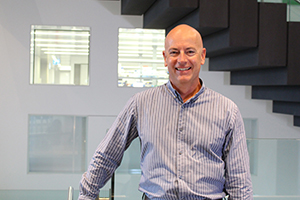
This is part of a series of articles showcasing the Sax Institute members’ diverse range of research with implications for future health policy and practice.
Hunter Medical Research Institute

An innovative program in health technology assessment is enabling NSW researchers to evaluate the cost and consequence of healthcare initiatives at the local level, says Associate Professor Andrew Searles, Head of Health Research Economics at the Hunter Medical Research Institute (HMRI).
The Health Technology Assessment and Implementation (HTAIm) program directly addresses a major gap in Australia’s health technology assessment architecture, said Associate Professor Searles, who leads the program.
“Health technology assessment tends to be poorly coordinated and practised at the local level,” he said. “Paradoxically, this is where most of the nation’s $160 billion annual health budget is spent – through local health districts and primary care.”
HTAIm was developed as part of NSW Regional Health Partners Centre of Innovation in Regional Health (RHP CIRH), a NHMRC-funded initiative to optimise the translation of cost-effective research outcomes into policy and practice. Associate Professor Searles said the RHP CIRH was based on strong collaborative efforts between five health services, HMRI and two universities. The program’s footprint extends from Gosford on the Central Coast to the Queensland border.
While health technology assessment was done well at the national level in Australia, with bodies such as the Medical Services Advisory Committee and the Pharmaceutical Benefits Advisory Committee overseeing the evaluations of medical services and pharmaceuticals, the HTAIm’s local focus was novel, he said.
“When we talk about health technology assessment, most people immediately think of evaluations of drugs and devices, but our framework is pitched at the local level. We focus on interventions such as models of care, policies, procedures, and health prevention,” he said.
Working towards sustainable health care funding
“With new, often more expensive, technologies, changing disease profiles as the population ages, and a rising prevalence of chronic disease and complex conditions, Australia’s health expenditure is very quickly going to become unsustainable,” Associate Professor Searles said.
“We have to be smarter with our healthcare spending. That means extracting more effectiveness and efficiency out of every dollar spent on health care.”
Associate Professor Searles said broader use of health technology assessment could help to ensure the healthcare dollar was being used cost-effectively; critical in a system where a 2015 Productivity Commission Efficiency in Health report estimated that at least 20% of expenditure could be better spent.
Watch the video on the work of the HMRI Health Assessment Team
Focus on implementation
A key component of the HTAIm framework was its emphasis on implementation, which was often overlooked in health technology assessment programs both in Australia and internationally, Associate Professor Searles said.
“You might have undertaken a high-quality, best-practice evaluation, but if nobody uses that information to make better decisions, then it was a waste of money,” he said. “Ensuring evaluation services are engaged with implementation experts is critical.”
A series of pilot programs, evaluating interventions designed by Regional Health Partners’ clinicians, have shown the value in HTAIm’s approaches.
In one program, the introduction of a fracture liaison service at the John Hunter Hospital in Newcastle was found to benefit both patient outcomes and the bottom line.
“We were able to identify improved patient outcomes in terms of reduced refracture rates, but, importantly, that the service was also responsible for savings of nearly $500,000 over a three-year period,” Associate Professor Searles said.
HTAIm has also been used to assess an intervention to reduce avoidable presentations from aged care facilities to emergency departments. The intervention was found to be effective in reducing ambulance transfers and emergency department presentations, resulting in significant cost savings.
With the HTAIm pilot evaluations complete, the next phase of the program was working to build research capacity and understanding of health technology assessment, he said.
The Sax Institute’s unique organisational structure, with 49 members from public health and health services research groups and their universities, connects us with a powerful public health network and world‑leading research expertise.
Find out more
- Read another member profile: UWA School of Population and Global Health: A grassroots research strategy to help address domestic violence
- Learn more about our Members
- Sign up to stay up-to-date with other news from the Sax Institute
